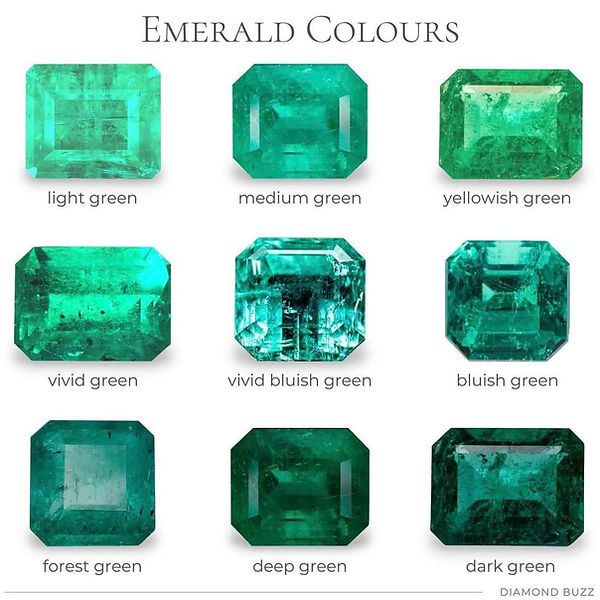
Smeraldo
Lo smeraldo appartiene alla famiglia dei minerali nota come berillo.
Esistono diversi colori del berillo minerale, tra cui Eliodoro, Morganite e Acquamarina. Tuttavia, il più prezioso della famiglia del berillo è lo smeraldo. Questi si sono formati centinaia di milioni di anni fa e sono molto più rari dei diamanti.
Lo smeraldo varia nel colore a seconda del contenuto di cromo, vanadio e ferro. Pertanto, a seconda della specifica miscela di questi elementi, gli smeraldi di diversi paesi e miniere tendono ad avere diverse tonalità di verde, anche se c'è sicuramente qualche sovrapposizione. Negli smeraldi dello Zambia, il cromo domina tipicamente vanadio e ferro e il contenuto di ferro è relativamente elevato, questi possono mostrare una tonalità verde bluastra con ricercata integrità cristallina.
Gli smeraldi colombiani hanno una tonalità verde giallastra e il vanadio domina gli oligo-elementi coloranti. Gli smeraldi colombiani hanno anche un contenuto di ferro inferiore rispetto ad altre regioni. A differenza di molte altre pietre preziose, le inclusioni visibili negli smeraldi sono ampiamente accettate. Le inclusioni, conosciute come il giardino di uno smeraldo, conferiscono ad ogni smeraldo un carattere unico e raccontano la storia della formazione della gemma.
Gli smeraldi dello Zambia sono ben noti per la loro chiarezza, un tratto raro negli smeraldi. La scoperta degli smeraldi dello Zambia. La scoperta degli smeraldi zambiani e la loro integrità cristallina caratteristica ha favorito l'adozione degli smeraldi in tutto il settore della gioielleria.
Gli smeraldi sia zambiani che colombiani ritraggono la squisita squisitezza degli smeraldi, e uno non è inferiore all'altro. È importante sottolineare che gli smeraldi zambiani dei campi di gemme vengono estratti in modo responsabile e vengono venduti al commercio di gioielli in forma approssimativa tramite aste trasparenti, garantendo che lo Zambia e la sua gente ricevano il pieno beneficio fiscale. gli smeraldi sono talvolta trattati con oli, cere e riempitivi per migliorare il loro aspetto. questo è accettabile a condizione che la natura del trattamento sia completamente scolorita per la sua composizione minerale.
